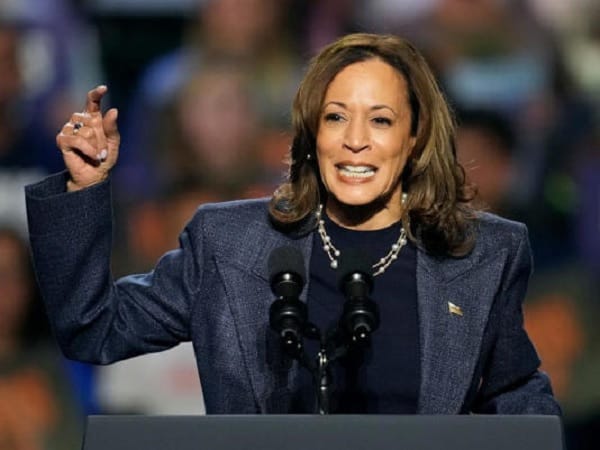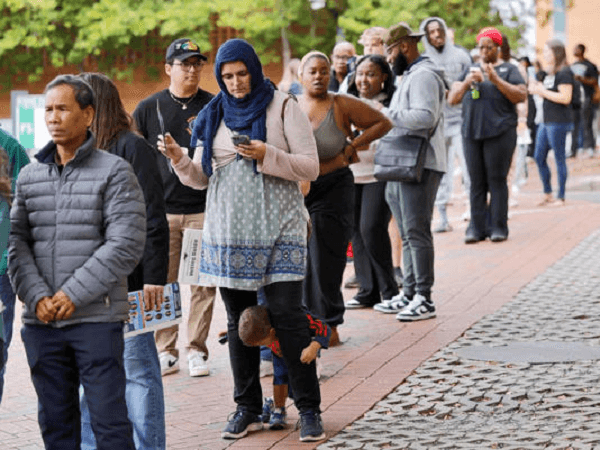With the U.S. presidential election drawing near, Trump and Harris are locked in one of the closest races in recent history. Seven crucial swing states, including Pennsylvania, Georgia, and Michigan, hold the key to securing the necessary 270 out of 538 electoral votes.

U.S. presidential election: Trump and Harris Brace for a Close Contest as Swing States Take Center Stage
The countdown has begun for the U.S. presidential election, with Trump and Vice President Kamala Harris competing in one of the tightest races in modern American history. Seven pivotal swing states, including Pennsylvania, Georgia, North Carolina, Michigan, Arizona, Wisconsin, and Nevada, are poised to play a decisive role.
Both candidates face intense competition, with little room for error. To claim victory, either candidate must secure 270 out of the 538 electoral votes up for grabs.

Breaking Down the Battlegrounds: Why Swing States Are Vital in This Race
The U.S. election system, defined by the Electoral College, allocates a specific number of electoral votes to each state based on population. In most states, a “winner-takes-all” system is in place, meaning the popular vote directly impacts the outcome of electoral votes. This year, the competition is focused on seven key battleground states where past elections have seen fierce Republican and Democratic turnover. Pennsylvania (19 electoral votes), Georgia (16), North Carolina (16), Michigan (15), Arizona (11), Wisconsin (10), and Nevada (6) represent the primary focus, as neither candidate can afford a misstep in these crucial areas.
Pennsylvania: A Swing State Steeped in History
Once a Democratic stronghold, Pennsylvania, with its 13 million residents, was narrowly won by Trump in 2016 by just 0.7%. In 2020, Biden reclaimed the state by 1.2%, turning the tide in a region known for its “Rust Belt” cities like Philadelphia and Pittsburgh. Trump and Harris have both campaigned intensively in Pennsylvania, each recognizing its importance. Trump’s message warns rural white voters about immigration’s impact on small towns, while Harris emphasizes infrastructure gains, promoting a $100 billion investment in manufacturing — an issue of particular importance for Pennsylvania residents.

Georgia: A Changing Demographic Landscape
Georgia emerged as a flashpoint at the end of Trump’s first term, bringing legal challenges over alleged election interference. Trump pushed state authorities to “find” enough votes to overturn Biden’s slim 2020 victory in a hotly debated maneuver. Although Trump’s legal issues are postponed until after the election, Harris is capitalizing on Georgia’s demographic shifts, especially among minority voters, to gain traction. With these changes, Harris hopes to turn Georgia into a reliably Democratic state.
North Carolina’s Growing Diversity and Political Potential
Since 1980, North Carolina has only once voted for a Democratic presidential candidate, yet Harris sees an opening. The state’s population, now over 10 million, is becoming increasingly diverse, boosting Democratic support. The Republicans face internal challenges, including a recent scandal involving the gubernatorial candidate, which threatens to split party loyalties. In a race this close, even a minor controversy could be pivotal.
Michigan: Trump’s 2016 Triumph and the Democrats’ Response
In 2016, Trump managed a surprising victory in Michigan, flipping this traditional Democratic state with his promises of economic revival. However, with Biden winning it back in 2020, Harris aims to build on this success. Her campaign underscores recent achievements in infrastructure and job creation, aiming to reassure Michigan’s workforce about a stable economic future.
Each state will be a test of each candidate’s strategy and adaptability. The race remains unpredictable, with every move, speech, and rally influencing what could be one of the closest elections in recent history.
The Next President of the United States: Economic Expectations and Policy Impacts
